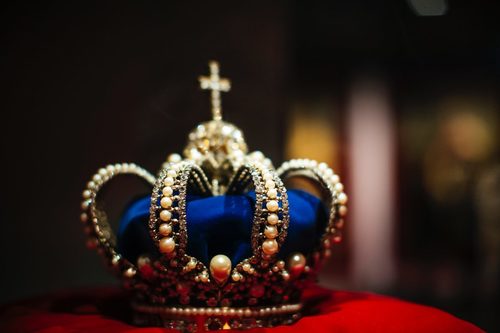The Cullinan, the largest diamond ever found, also known as the Great Star of Africa, as it was discovered in South Africa, is also a naturally occurring object that gives us insight into the deep earth.
The Cullinan diamonds – which were discovered as one large diamond, were split into nine pieces – named Cullinan I to IX – are known across the world for their significant size and their shimmery transparency.
Belonging to the family of “Clippir” diamonds, the Cullinan diamonds’ characteristics are common to this particular group of shimmering rocks.
These diamonds are the only objects to have made it out of the deep earth and have not changed in appearance. Usually, items extracted from the deep earth change beyond the point of recognition.
ALSO SEE:
Celebrities are declining invitations to perform at King Charles’ coronation
Here are 11 scientific facts about the Cullinan and other diamonds.
- Clippir diamonds, such as the Cullinan, contain little pockets of metal that prevent them from rusting, causing their appearance to remain the same, even after they’ve been extracted.
- These metal pockets signify that they had not been exposed to oxygen as the diamonds originate from between 360km and 750km underground, compared to the 150 – 200km that “ordinary” diamonds originate from.
- As a result of our fascination with diamonds that led to the tens of millions of dollars invested in the diamond mining industry each year, scientists simply view diamonds as “sparkling lumps of carbon”.
- There are no other known materials that originate from a depth of 600km, which is the depth that Clippir diamonds are thought to originate from.
- Every mined diamond is at least 990 million years old.
- Some of the oldest diamonds first started crystallising at least 3.2 billion years ago. At this time, the planet may have been one big ocean, with no land or continents as we know them today.
- Some diamonds, like the 124-carat Clippir diamond, contain bridgmanite which signifies that it originates from the lower mantle of the earth and were created from pressures of 240 000 times than that of sea level. That’s an astounding 240 times the pressure of the Mariana Trench, which is the deepest part of the ocean.
- It is the generally accepted truth within the scientific community that diamonds are formed due to the entrapment of ancient seawater along with sinking oceanic plates. At some point, the liquid rejects carbon and it crystallises into what we know as diamonds.
- What sets diamonds like the Cullinan apart is the fact that they start out as carbon within liquid metal instead of water, causing them to be more transparent than regular diamonds.
- Deep diamonds tell a story of the process of subduction, which is essentially how oceanic tectonic plates sink down into the Earth.
- They also teach us about the minerals that can be found in the lower mantle of the earth, like carbon. Carbon is essential for the creation of diamonds, without it, the creation of diamonds would not be possible.
The creation of diamonds is still a mystery to scientists and they are actively in the process of being researched.
The King’s Crown Jewels
King Charles III will include the Cullinan in his crown at his coronation. Queen Camilla will also have fragments of the Cullinan in her selection of Queen Mary’s crown, instead of the anticipated crown of Queen Elizabeth (Queen Mother, not to be confused with Queen Elizabeth II) which is adorned with the highly controversial Koh-i-Noor, also one of the world’s biggest diamonds mined in India, from the Queen’s crown.
Not only will the crowns contain the Cullinan, but will be included in the rest of the King’s regalia, such as the Sovereign’s Sceptre too.
ALSO SEE:
The King’s Coronation + a sneak peek into “The Crown” Season 6
Feature image: Unsplash

